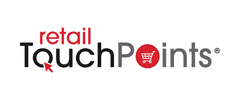
We begin the 43rd edition of our weekly news digest with a thought leader opinion piece on “How to Launch a Marketplace to be the Disruptor, Not the Disrupted” written by Tom McFadyen, Analyst, Author, and CEO at McFadyen Digital. It lays down a blueprint for retailers to start their own marketplace by considering business implications and technology platform requirements by citing the Marketplace Maturity Model (MMM), an industry-standard assessment of marketplace capabilities. At a time of strife and crisis in Ukraine, marketplaces are coming together to show support and express solidarity. The three largest marketplaces in the US publicly made statements showing support in several ways to Ukraine and its people amidst the current conflict in the country. Etsy CEO Josh Silverman announced that Etsy would be wiping the balance of all Ukrainian sellers thought to total approximately $4 million. Since then, both Amazon CEO Andy Jassy and eBay CEO Jamie Iannone have pledged their company’s backing to Ukraine. The eSeller 365 news update has more information. NFTs are seeing massive investments from all quarters and are getting huge tailwinds; the Finextra article shares insights on devising a strategy for the exclusive NFT marketplace. The many areas this touches upon are; different kinds of marketplaces, streamlined vs Augmented Marketplaces, amongst others. B2B catalogs have evolved in terms of what they contain and how they are distributed, to their management. Core DNA provides a B2B catalog 101 that touches upon areas like; what value a B2B eCommerce catalog adds to your customers, how a B2B eCommerce catalog differs from B2C and the requirements of a B2B catalog. Stephanie Wittmann from commercetools throws light on the cost of not going headless by building a modern commerce solution that fits the business needs against working around a cumbersome legacy platform that holds back the business. Staying on a legacy platform is much more problematic than re-platforming. Platform migration can be an absolute nightmare if not done right; VTEX article shares some tips on prioritizing the phases of an eCommerce platform migration by staying on top of implementation. Read this and more in this week’s edition.
Notable news from the past week

How to Launch a Marketplace to be the Disruptor, Not the Disrupted
Some retailers lament the woes of Amazon and other marketplaces cutting into their sales, profit, market share and valuation. Some retailers launch their own marketplace to become the disruptor instead of the disrupted. But how can a retailer launch its own marketplace? It is important to understand both the business implications and the technology platform requirements. The Marketplace Maturity Model (MMM) defines the evolution of the retail business model from basic first-party goods through five stages of evolution.

The 3 Big Ecommerce Marketplaces Show Support For Ukraine Through Current Conflict
The largest three US marketplaces, Amazon, eBay, and Etsy have now all publicly made statements showing support in a number of ways to Ukraine and its people amidst the current conflict in the country. This started on Monday when Etsy CEO Josh Silverman announced that Etsy would be wiping the balance of all Ukrainian sellers thought to total approximately $4 million. Since then, both Amazon CEO Andy Jassy and eBay CEO Jamie Iannone have also pledged their company’s backing to Ukraine.

Online Devising a Strategy for the Exclusive NFT Marketplace
NFTs have been the latest in the addition of breathtaking investments. They might seem to be something like a passing cloud, but they have attained something bigger in recent times. Their achievements are big time. Major players have discovered that partnering with a third-party platform is more feasible, as it can lower upfront costs, providing access to a larger existing customer base, and providing valuable add-on services like marketing, legal, and technical support.

The B2B Ecommerce Catalog: What You Need to Know
B2B catalogs have grown and evolved from the earliest days of business when companies often exchanged catalogs by mail. In the past, catalogs were usually paper-based, so it was necessary to use primitive ordering methods such as email, phone, or fax. Also, they were hardly ever updated and costly to distribute. They are a necessary tool for businesses to connect with their customers and stay ahead of the competition. If you want to know about eCommerce catalogs, read on.

The Cost of Not Going Headless: Why Legacy Platforms Are So Expensive
For a commerce platform to be optimal, it must be agile, flexible, fast and customizable. This is exactly what headless commerce enables your business to be. Often, when companies are thinking of migrating their commerce platforms and headless comes up as an option, the first thing that comes to mind is the cost of re-platforming – and it seems daunting. But we suggest that you think about it in a different way: What does staying on a legacy platform cost you? And how does that compare to the cost of headless commerce?

The Value of Consumer Certainty in Driving Digital Transformation
There has been so much written over the last two years about the consumer’s great shift to digital – and PYMNTS has contributed our fair share to that subject. Many of those storylines have documented the what and the how of that shift: how many people are shopping online or ordering from aggregators or working from home or using telehealth services, what devices they are using to engage with these digital touchpoints, how the reopening of the physical economy is affecting their digital behaviors or not.

How to Prioritize the Phases of an Ecommerce Platform Migration
Ecommerce is a fast-paced business, and the rapid innovation it brings with means that, at some point, online stores need to explore an ecommerce platform migration in order to keep up with customers’ demands. We’ve previously talked about how to identify when the need to platform, as well as how to convince teams and companies of said need. These two topics, while important, focus on what to do before pulling the trigger on a platform switch, but what are the steps to be taken once the migration process starts?
To subscribe to the Ecommerce & Marketplaces Newsletter, please complete the subscription form on this page (either to the right or below this article, depending on device). If you have any suggested content for this newsletter or would like to discuss evolving your organization’s digital commerce, please write to us at info@mcfadyen.com.
Related Articles
Turn Insight Into Impact.
Start Today.




